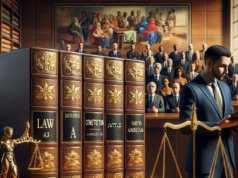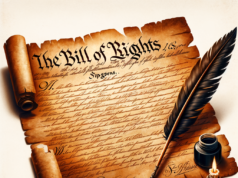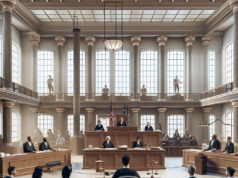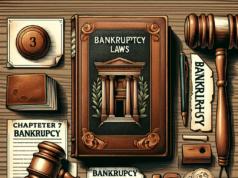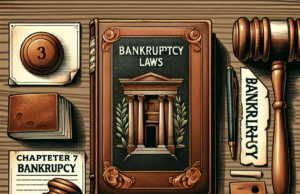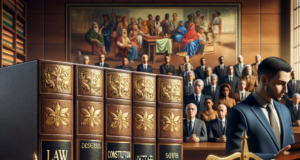Courtroom dramas have long captivated audiences, both in the realm of fiction and reality. These narratives, whether portrayed on screen or played out in actual courtrooms, reveal the complexities of the legal system and the human condition. As we delve into the evolution of courtroom dramas, the elements that define them, and the real-life cases that inspired their creation, we uncover the shocking truths and controversies that have emerged from these legal battles. This article aims to explore the intricate relationship between courtroom dramas and the legal world, shedding light on how these stories shape public perception and influence legal practices.
The Evolution of Courtroom Dramas: A Historical Perspective on Legal Storytelling
The genre of courtroom dramas has evolved significantly since its inception, reflecting societal changes and the shifting landscape of the legal system. Early examples can be traced back to ancient civilizations, where legal disputes were often dramatized in public forums. However, the modern courtroom drama began to take shape in the 19th century with the advent of the novel and theater. Works like “The Trial of the Century” and later films such as “To Kill a Mockingbird” and “12 Angry Men” brought courtroom proceedings to life, emphasizing moral dilemmas and the pursuit of justice. Over the decades, these narratives have adapted to include contemporary issues such as racial inequality, wrongful convictions, and the complexities of modern law, making them relevant to each new generation of viewers.
Key Elements That Define Courtroom Dramas: From Character Archetypes to Plot Twists
Courtroom dramas are characterized by several key elements that contribute to their gripping narratives. Central to these stories are archetypal characters, including the idealistic lawyer, the morally ambiguous judge, and the sympathetic defendant, each serving to heighten the emotional stakes of the trial. Plot twists are another hallmark of the genre, often involving surprise witnesses, hidden evidence, or shocking confessions that challenge the audience’s perceptions of guilt and innocence. The courtroom itself serves as a dramatic backdrop, where tension builds through cross-examinations and closing arguments, culminating in a verdict that resonates far beyond the confines of the courtroom. These elements work together to create a compelling narrative that keeps audiences on the edge of their seats.
Real-Life Cases That Inspired Iconic Courtroom Dramas: Truth Behind the Fiction
Many iconic courtroom dramas draw inspiration from real-life cases that have captured public attention and sparked debate. For instance, the infamous trial of O.J. Simpson in the 1990s not only became a media sensation but also inspired numerous films and documentaries that explored themes of race, celebrity, and justice. Similarly, the case of the Scottsboro Boys, a group of African American teenagers wrongfully accused of raping two white women in the 1930s, has been adapted into various artistic interpretations, highlighting systemic racism and the flaws in the legal system. These real-life stories serve as a reminder that the line between fact and fiction is often blurred in the pursuit of justice, and they underscore the importance of examining the societal implications of legal proceedings.
Shocking Revelations: Uncovering the Most Controversial Moments in Courtroom History
Throughout history, courtroom dramas have been marked by shocking revelations that have left lasting impacts on public perception and legal practices. High-profile cases such as the trial of Amanda Knox, accused of murder in Italy, revealed the complexities of international law and media influence on justice. Similarly, the trial of George Zimmerman for the shooting of Trayvon Martin ignited national conversations about race, self-defense laws, and the role of the media in shaping narratives. These moments not only captivated audiences but also prompted critical discussions about the integrity of the legal system, the influence of public opinion, and the ethical responsibilities of those involved in high-stakes trials.
The Role of Media in Shaping Public Perception of Courtroom Dramas and Trials
The media plays a crucial role in shaping public perception of courtroom dramas and the trials that inspire them. With the rise of 24-hour news cycles and social media platforms, the dissemination of information about ongoing trials has become instantaneous and pervasive. This constant coverage can influence public opinion, often leading to preconceived notions of guilt or innocence before a verdict is reached. Additionally, sensationalized reporting can overshadow the complexities of legal proceedings, reducing them to mere entertainment rather than serious examinations of justice. As courtroom dramas continue to unfold in real-time, the interplay between media coverage and public perception remains a critical area of concern for legal professionals and society at large.
Lessons Learned: How Courtroom Dramas Influence Legal Practices and Public Awareness
Courtroom dramas, both fictional and factual, serve as powerful tools for educating the public about the legal system and its intricacies. They highlight the importance of due process, the presumption of innocence, and the ethical responsibilities of legal practitioners. Moreover, these narratives can inspire reform by bringing attention to injustices and systemic flaws within the legal framework. For instance, the portrayal of wrongful convictions in films and documentaries has led to increased advocacy for legal reforms and the establishment of innocence projects aimed at exonerating the wrongfully accused. As audiences engage with these stories, they become more informed citizens, fostering a greater understanding of the law and its impact on society.
In conclusion, courtroom dramas have evolved into a multifaceted genre that not only entertains but also educates and informs. By examining the historical context, key elements, real-life inspirations, and the role of media, we gain a deeper understanding of how these narratives shape public perception and influence legal practices. As society continues to grapple with issues of justice and fairness, the lessons learned from courtroom dramas remain relevant, reminding us of the ongoing quest for truth in the complex world of law.






